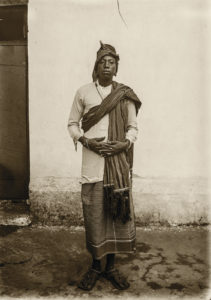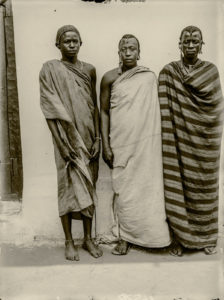Traces of Chief Mangi Meli of the Chagga community in Old Moshi can still be found in songs, stories and archives. But his head is missing. As chief for a little under a decade, Mangi Meli fought the German colonial occupation of territory in Kilimanjaro. He was executed for his resistance on March 2, 1900, by hanging in a public square.
His head was then cut off and said to have been shipped to Berlin, Germany at the request of the Ethnological Museum’s Head of Africa and Oceania department Felix von Luschan. Von Luschan collected thousands of skulls from all over the world for scientific testing based on Rassenlehre – racial ideology.
For the past 50 years, Isaria Meli has been campaigning through the Meli Foundation, appealing to the Tanzanian and German governments to seek the return of his grandfather’s skull.
His efforts have finally paid off – in part. Chief Mangi Meli’s story has been brought to the attention of the German government through an exhibition in Berlin. This was centred around a video installation titled Mangi Meli Remains – an innovative short film animation in Kiswahili, German and English on the life, times and death of the chief, his links with other chiefs in the resistance to German colonial rule and the events leading to his death.
After the exhibition closed in Berlin, it moved temporarily to Dar es Salaam before reaching its permanent home in Old Moshi, where it opened in March 2019 at the Old Courthouse.
Along with the video, the exhibition includes documents and photographs of the Chagga people and chief Mangi Meli taken in the late 1800s to the early 1900s by colonial German army officers, and never previously displayed in Tanzania.
The exhibition is the work of German national Konradin Kunze and the Tanzanian Sarita Mamseri. Mamseri is a heritage educator with a Masters in History of Art & Archaeology, while Kunze, a German national, is a theatre producer with Flinn Works.
The idea for the exhibition started when Kunze started researching German colonial history in Tanzania. “When I first came to Tanzania eight years ago, I was shocked to learn about my country’s colonial history. I didn’t learn it in school back in Germany, which would have been the proper way, I think. We maybe had just about one hour of it because ‘Germany had some colonies but it was for a short period.’’’
“The objective of this project is definitely to educate the public. This story should not be forgotten and on the other hand, it is giving back to the community by permanently install something in Old Moshi, although it is not the chief’s skull, which we’re still trying to find. However, at least we can bring back the information that I have gathered back in Germany,” Kunze added.
Kunze thinks the photographs he found, as well the archived material in Germany (such as http://www.deutschefotothek.de/list/freitext/hans+meyer), should be readily available in Tanzania since it is a crucial part of the country’s history too.
Mamseri concurs, saying, “The atrocities, tragedies and theft, looting, and acquisition of personal items of significance and of human remains cannot be undone or indeed forgotten when still so much is to be acknowledged and then repatriated. It also continues to amaze me how much of Tanzania’s history can be found in foreign collections, both private and state. It just reinforces my opinion that efforts to counterbalance the role of colonial archives and collections in Europeans’ understanding of Africa must be readdressed through the collecting and presenting “It is clear that the Europeans saw us as savages and were trying to prove that we aren’t real human beings,” said Cloud Chatanda, an illustrator who worked on the project. “Mangi Meli’s father, Mangi Rindi sent his best soldiers to meet the Kaiser in Berlin and gave his two best soldiers ivory, minerals and leather to present to the Kaiser and in return asked for a few weapons. The Kaiser sent the soldiers back with a music box and a sewing machine.”
Currently, Germany holds over 5,000 skulls of its former colonial subjects, including 200 from Tanzania. Among the skulls, six were as being from Moshi, dating back to the time of Mangi Meli’s death. Some of them have the inscription Dschagga/Wadschagga.
Mangi Meli Remains is a collaborative project between Flinn Works (Germany), BSS Projects (Tanzania/UK), Old Moshi Cultural Tourism, ArtEver (Tanzania) supported by the Ethnological Museum Berlin and the Humboldt University Berlin. It was funded by the Goethe-Institut Tanzania, the Berlin Senate Department of Culture and Between Bridges (non-profit exhibition space organised by Wolfgang Tillmans).


